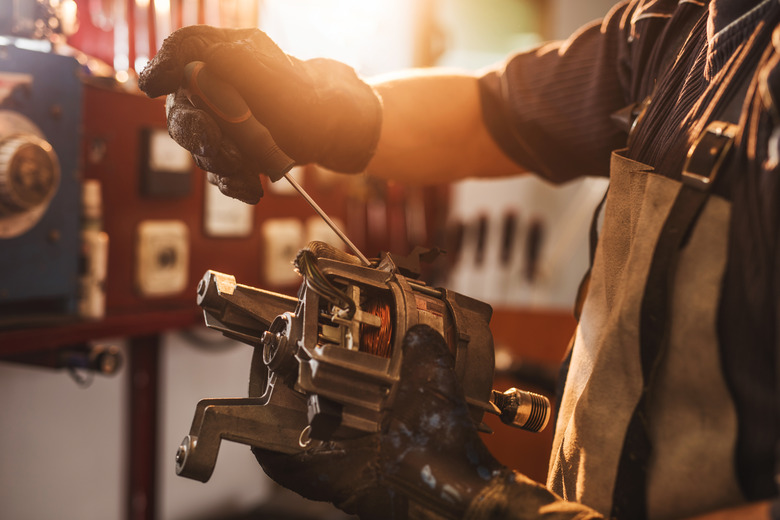How To Wire Two Speed Motors
Two-speed motors use a switch oriented towards either high speed or low speed coil. As the machinist, you are responsible for determining the speed at which you'd like the motor to run. Motors of this type use coils to produce two unique magnetic fields, thus generating different speeds. If you are trying to properly rewire or create a two-speed motor, the process is fairly straightforward. However, proper safety procedures must be adhered to because any work with wiring or electricity can be dangerous.
Two-Speed Motor Wiring Basics
Two-Speed Motor Wiring Basics
Since a two-speed motor relies on different coils to produce different speeds, there are usually two input wires. In many instances, the low- and high-speed coils share an external wire. Additionally, the low-speed coil is typically supplied by a red wire, while the high-speed coil is fed by a black wire. Since you have to choose between the speeds using a two-speed motor switch, it's impossible for both coils to become energized simultaneously.
Wiring Safety Basics
Wiring Safety Basics
Before you begin work on any project involving electricity, inform those around you of what you'll be doing. The motor you're working on should be unplugged or disconnected before you begin to work. To be extra cautious, you can turn off power to the unit at the circuit breaker box. Using high-voltage gloves and tools with insulated handles is also a safe bet for this type of project.
How to Wire Two-Speed Motors
How to Wire Two-Speed Motors
To properly set up this sort of high-low switch wiring, you'll need an AC power supply, the two-speed motor and a double-pole-double-throw switch. Most DPDT switches use three terminals because there will be a high-speed, low-speed and common wire hooked into them. Attach a wire between the common terminal of the AC power supply to the common terminal of the motor.
Identify the black power supply wire and connect it to the center terminal on the switch. Next, use a red wire to connect the switch to the low-speed terminal of the motor. Then, use a black wire to connect the switch to the high-speed terminal of the motor.
You can now turn on the power to your motor and test that the switch works properly. The motor should run at low speed when the switch is flipped in the direction of the red-wired terminal and at a high speed when it is flipped in the direction of the black-wired terminal. If this is not the case, turn off the power. You will need to switch which wires go to which terminals so that they are properly arranged.
